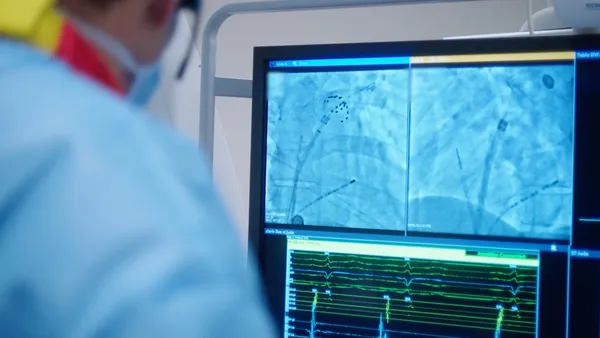Dive Brief:
- The U.S. Food and Drug Administration rejected a clinical trial application from Elon Musk’s brain implant company on safety grounds last year, Reuters reports.
- According to multiple anonymous sources, the FDA raised concerns about the device’s lithium battery, the potential for its wires to migrate across the brain and how it would be removed.
- The rejection reportedly happened one year ago and the company, Neuralink, is still working to address the concerns. In November, Musk said in a presentation that the company hoped to enter the clinic within six months.
Dive Insight:
Musk founded Neuralink in 2016. Since then, the billionaire has made bold claims about the potential of the technology, pitching it as both a way to treat conditions such as paralysis and blindness, and a way to turn people into cyborgs that are better equipped to match the capabilities of artificial intelligence.
Neuralink reportedly applied to run a first-in-human clinical trial to assess the ability of the implant to help disabled people type. In rejecting the application, the FDA noted a risk that the device’s wires may move to other parts of the brain, potentially causing inflammation, making the implant less effective and necessitating the removal of the technology, Reuters reported, citing several people who had read the FDA’s communications. Neuralink discussed some of the issues publicly last year.
“They do ask some really great questions. Other things involve things like the thermal benchtop testing of our implant. Obviously, it's important that our implant doesn't damage the tissue by overheating. So having really rigorous and valid benchtop testing for that is very important. It's actually something that we're redesigning to be even more accurate. They ask a lot of very hard questions on biocompatibility chemical characterization,” Jeremy Barenholtz, head of brain interfaces software at Neuralink, said at the time.
The FDA also reportedly asked for more animal data on the failure risk of Neuralink’s lithium battery, which can be charged remotely, Reuters reported. Neuralink has run tests in pigs to address some of the FDA’s concerns but has yet to get clearance to move into the clinic.
Device removal is another area of concern. The ability to upgrade the device is central to the vision of Musk, who said “I'm pretty sure you would not want an iPhone 1 stuck in your head with the iPhone 14 is available” in a presentation last year, but the potential for the removal of the implant to damage brain tissue is a concern for the FDA, Reuters noted.
Neuralink acknowledged that removal and replacement is a “challenging problem” that it is yet to solve in its presentation in November, noting that the tissue that forms over the device’s surface as the body heals is the cause of the difficulty.
“Our best successes have come from making the procedure less invasive. Instead of directly exposing the brain surface, we instead keep the dura in place, maintaining the body's natural protective barrier. This prevents encapsulation at the brain surface,” Alex Wood-Thomas, a mechanical engineer at Neuralink, said in a presentation. “We've come pretty close to just popping out an implant and reinstalling another one in the exact same location.” The approach creates new challenges related to imaging but Neuralink is developing a system to overcome them.
The timeline for resolving the FDA’s concerns is unclear. Late last year, Musk predicted Neuralink would get the green light in the spring but he has a history of missing targets for the move into human testing.











